Reading a picture book is the interests and pastimes of many modern people. In the picture book world, the pictures are used as its compositions and colours, to show the characteristics of the protagonist, highlight the plot of the story. The texts are used to emphasise vocabulary and organisation, to throughout the development of the entire story, and to various details are described. Both are the main elements that make up the picture books. Among the numerous creations, there is a phenomenon that deserves attention. Dr. Tze-Min explores the intersection between the world famous books and the picture books, in his erudite research, for the Special Feature. A Different Truths exclusive.
“Reading” has become a common sight throughout the world, and “masterpieces” and “picture books” are the objects of reading that everyone loves. The meeting of the two is bound to be very brilliant and will lead the tides. The following will give a description of the research motivations and methods of this article:
Study Motivations and Purposes
Reading a picture book is the interests and pastimes of many modern people. In the picture book world, the pictures are used as its compositions and colours, to show the characteristics of the protagonist, highlight the plot of the story. The texts are used to emphasise vocabulary and organisation, to throughout the development of the entire story, and to various details are described. Both are the main elements that make up the picture books (Su-Xia Xu, 2002). Among the numerous creations, there is a phenomenon that deserves attention. Made the original classics, which are more profound, are presented in a simplified and graphic manner, creating another new style, which is of great help to the popularisation and deepening of the classics.
D.B. Johnson’s Henry trilogy picture books: “HENRY BUILD A CABIN”, “HENRY CLIMBS A MOUNTAIN” and “HENRY HIKES TO FITCHBURG” all are excellent works created with Henry David Thoreau’s (Hereinafter referred to as Thoreau) “WALDEN” as the blueprint. They were once selected for the “New York Times” Children’s Books Bestseller List, “Publisher Weekly”, “The American School Library Journal”, “Boston Globe Daily”, “Clarion Magazine” Book of the Year Awards, New York Public Books The museum’s cutting-edge Keats Awards, etc. This shows that they are subject to a degree of attention. (http://www.books.com.tw )
This article wants to use the “Lakeside Diary” as a basis to explore how D.B. Johnson has combined graphics and textual methods to show the focus of classic masterpieces and to display the characteristics of self-creating picture books.
Research methods and processes
Inductive method: From the perspective of classification, the Henry trilogy’s storyline and role modelling are summarised, showing content focuses on “WALDEN”.
Analytical Method: Analyses how the author of the Henry Trilogy describes the texts, conveys the images, and expresses the characteristics of the self-created picture book.
Profiles of Thoreau and D.B. Johnson
Thoreau
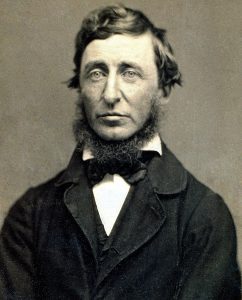 Thoreau did not like the noise and disturbance caused by urban civilization, and he was eager to live a quiet life in the wild forest. He did likes to spend time relaxing in the embrace of nature and believes that material needs should be minimised. In 1845, he built a log cabin on the shore of Walden. After more than two years of living in seclusion, he wrote what he saw and felt as a world-famous “WALDEN “(Lakeside Notes). This book has been sold for more than a century. Its translations are spread all over the world. They are widely recognised as the masterpieces of spiritual travel and affect the attitude of many people.
Thoreau did not like the noise and disturbance caused by urban civilization, and he was eager to live a quiet life in the wild forest. He did likes to spend time relaxing in the embrace of nature and believes that material needs should be minimised. In 1845, he built a log cabin on the shore of Walden. After more than two years of living in seclusion, he wrote what he saw and felt as a world-famous “WALDEN “(Lakeside Notes). This book has been sold for more than a century. Its translations are spread all over the world. They are widely recognised as the masterpieces of spiritual travel and affect the attitude of many people.
Thoreau is also an idealist, advocating the abolition of slavery and making speeches everywhere in order to promote “anti-slavery” and “non-violent resistance” (Civil Disobedience), not only affecting people of his time, but also Mahathir. Mahatma Gandhi also used this concept to help India break away from British colonial rule. The black priest Martin Luther King Jr. was inspired and repeatedly imprisoned, prompting the U.S. government to legislate to protect the basic human rights of each citizen.
D.B. Johnson
D.B. Johnson was born in the United States in 1944. During his college days, he read the “WALDEN” and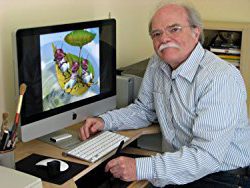 enjoyed that kind of simple and tranquil attitude to life from the text of Thoreau. He had painted illustrations, comic strips, and cartoons for newspapers served as an art director of the magazine and was fixed as a “New York Times” book review printmaking illustration.
enjoyed that kind of simple and tranquil attitude to life from the text of Thoreau. He had painted illustrations, comic strips, and cartoons for newspapers served as an art director of the magazine and was fixed as a “New York Times” book review printmaking illustration.
In order to be an artistic creator with a simple need for life, for more than 25 years, he chose to become a freelance painter. His famous works include the Henry Trilogy, which is based on “WALDEN” (Lakeside Notes). Currently lives with the wife in New Hampshire, USA (http://www.dbjohnsonart.com).
The masterpieces shown in the picture books
There are 18 chapters in Thoreau’s ” WALDEN “: Economy, Where I Lived, and What I Lived For, Reading, Sounds, Solitude, Visitors, The Bean-Field, The Village, The Ponds, Baker Farm, Higher Laws, Brute Neighbours, House-Warming, Former Inhabitants and Winter Visitors, Winter Animals, The Pond in Winter, Spring, and Conclusion. The following will focus on the main contents of the three picture books and illustrate what the key points of their masterpieces.
“HENRY BUILD A CABIN”
Thoreau wrote in “Economics”: “Near the end of March 1845, I borrowed an axe and walked into a forest near Walden Lake to the place where I was planning to build a house…” (Thoreau, Chinese Translation by Xu-Chong Xin, 2013). At the beginning of the picture book, Henry cut twelve trees and gradually built a log cabin. But in this process, many people were concerned and questioned about his actions. For 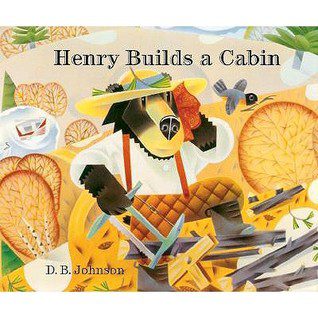 example, Emerson felt that the house was too small, Alcott thought the cabin was too dark, and Litiya had abandoned the cabin too narrowly to dancing inside. But none of this can shake Henry’s determination. He still upholds his original intentions, covers the house, and patiently explains to his friends that the house is about to be used. He believes that the chalets have many potential spaces. For example, a broad bean field can be a restaurant, a sunny place is a library, a path leading to a pond is a dance floor, and the windows and doors of the chalet can bring sunshine.
example, Emerson felt that the house was too small, Alcott thought the cabin was too dark, and Litiya had abandoned the cabin too narrowly to dancing inside. But none of this can shake Henry’s determination. He still upholds his original intentions, covers the house, and patiently explains to his friends that the house is about to be used. He believes that the chalets have many potential spaces. For example, a broad bean field can be a restaurant, a sunny place is a library, a path leading to a pond is a dance floor, and the windows and doors of the chalet can bring sunshine.
Because Henry wanted a simple and simple life, he didn’t need to build a big house or a gorgeous decoration. As for furniture, only beds, chairs, tables, wooden boxes and fireplaces were enough. Therefore, the process of simple building materials, simple equipment and even covering the huts is very simple. Henry often said: “It is a little bigger than it looks.” (D.B. Johnson, Translated by Suzhen Fang, 2003).
Fully revealed his contentment of life feelings.
“HENRY HIKES TO FITCHBURG”
Another paragraph of text in <Economy>:”Someone said to me: ‘You like to travel. You can ride a car and you can reach Fitchburg today to face the world.’” (D.B. Johnson, Translated by Suzhen Fang, 2003). In 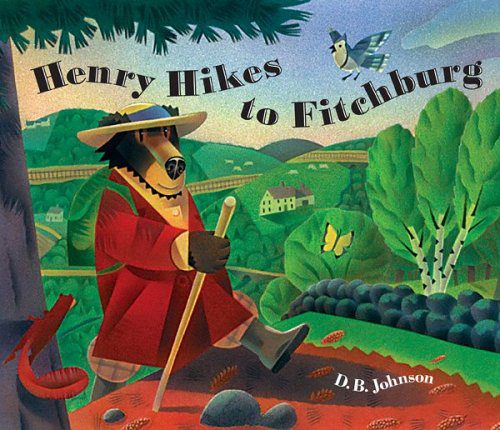 that interesting picture book, Henry and his friends decided to travel to Fitchburg. This trip was 30 miles away. The two men performed in different ways to see who would complete the task first. Henry firmly believes that walking is the fastest way to travel, and his friend decided to work first to make money, and then buy a train ticket directly to the destination.
that interesting picture book, Henry and his friends decided to travel to Fitchburg. This trip was 30 miles away. The two men performed in different ways to see who would complete the task first. Henry firmly believes that walking is the fastest way to travel, and his friend decided to work first to make money, and then buy a train ticket directly to the destination.
The picture book presents two different options: left and right pages. Henry’s friends are working on the left half of the page, while Henry’s on the right half of the page is taking a walk while enjoying the scenery along the way. The book’s representation is as follows:
Table: Comparison of Friends and Henry’s Travel Methods
| The Friend | Henry | |
| 1 | Work hard to help people move firewood | Holding his clothes to cross the river easily |
| 2 | Sweat holding a broomstick to sweep the tour | A walking stick that is accompanied by small pine trees and prepared for a walk |
| 3 | Pulling out weeds in the vegetable garden | Collecting flowers and plants in the wilderness and pressing it in the book |
| 4 | Whitewash fence in front of whitewashed court | Appreciate the stone on the low stone wall with a magnifying glass |
| 5 | Chairs with chairs to move bookcases high | Climb the treetops and look into the distance with a telescope |
| 6 | Busy feeding cattle on the farm | Leisurely crossing the river on a bamboo raft |
| 7 | Help to clean the hen house | Unexpected discovery of bird nests and eggs in swamps |
| 8 | Rushing flour with a cart | Glad to discover the honey on the tree |
| 9 | Hurrying to catch a train to FITCHBURG | Leisurely jump into the pond for swimming |
| 10 | Hard to move in a crowded train box | Enjoy delicious food in an orchard full of blackberries |
Two different ways are drawn in those vivid pictures. On the one hand, it shows Henry’s calmness and leisure. The other side shows the busyness and urgency of friends.
In WALDEN”, Thoreau took a very unfavourable attitude toward people “taking great time to make money” (Thoreau, Chinese translated by Xu-Chong Xin, 2013). In the picture book, however, there are some adjustments: At the end of the journey, the friend arrives at Fitchburg first, proudly telling Henry: “Look, it’ surely faster to take the train!” (D.B. Johnson, Chinese translated by Suzhen Fang, 2003). But Henry did not care. Different choices have gained their own experiences and gains. This is another ingenious thought by the author of the picture book.
“HENRY CLIMBS A MOUNTAIN”
The story comes from a passage in the village: “In the afternoon when the first summer was coming to an end, I went to the village and got a shoe from the cobbler. As a result, I was caught and sent to the prison.” (Thoreau, Chinese translation by Xu-Chong Xin, 2013). The main reason why Thoreau was arrested was that he firmly opposed the sale of black slaves and refused to pay taxes to the government. He hoped that more people would stop paying taxes, prompting the state to modify the law and change the status quo. Henry in the picture book would rather choose to go to jail, and also try to express dissatisfaction with slavery. This is a manifestation of his loyalty to self. It is also a reflection of the original thinking
On the other hand, although Henry was locked up in jail, he imagined that he would climb a mountain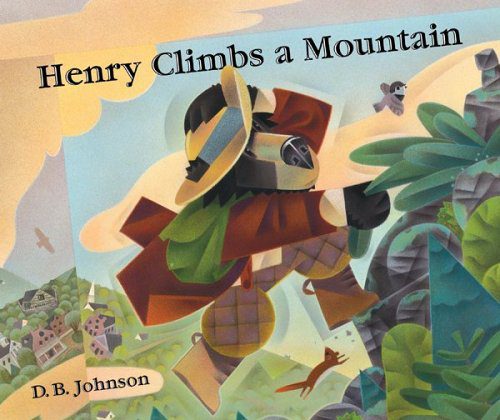 and meet a running barefoot nigger on the top of a mountain. They sat together and laughed and sang happily. A relationship of friendship was established, so Henry sent his shoes to the black slaves before he said goodbye, helping him to escape. The encounter between Henry and the black slave was the most important thing in the walk. The author used this to express Thoreau’s humanitarian spirit against the slave trade.
and meet a running barefoot nigger on the top of a mountain. They sat together and laughed and sang happily. A relationship of friendship was established, so Henry sent his shoes to the black slaves before he said goodbye, helping him to escape. The encounter between Henry and the black slave was the most important thing in the walk. The author used this to express Thoreau’s humanitarian spirit against the slave trade.
In fact, “shoes” have many meanings in the story: they can protect their feet, can take walks, and can even be used to help escape. The black slaves with their ankles have to go a long way, “as far as the stars of the north.” (D.B. Johnson, translated by Suzhen Fang, 2003) This means that the road to escape is long, but as long as there is a glimmer of hope, it cannot be abandoned. Therefore, even if Henry had only one shoe left, he would also help the slaves fight for freedom. Henry, who had not been wearing shoes, had lost his foot on the sharp stones, tripped over by the roots, and stumbled all the way, but he was as sweet as it was because it was a pleasure from the depths of his heart.
Features of Henry Trilogy
With the cooperation of photos and texts, the Henry trilogy allows readers to experience the alternative “Lakeside Notes,” showing distinctive features, the following is divided into four points to illustrate:
Rich images, simple text
Since the author of the Henry trilogy was a painter, when he was creating a picture book, the image was much richer than the text, that is, the story was described with a “short pen”, and the part of the picture was rich and detailed. Let the part of the text that is not clearly described be supplemented by pictures (Liang Lin, 2000). Taking Henry’s imagination in prison to climb a mountain as an example, the picture takes up 90% of the pages and details the scenery on the mountain: rain falling from the sky, all kinds of trees, happy birds, scattered houses, laid-back clouds, raised stones, flying eagles, etc., while the text only had two sentences: “It rained. Henry lowered the hat and put on a coat.” “He was on the ceiling and drew a fly in the clouds, eagle.” (D.B. Johnson, Translated by Suzhen Fang, 2004). Readers must pay careful attention to the drawings in order to appreciate the author’s intentions.
There is another place worth paying attention to: the author presents Henry’s climbing situation in a cross-page manner, and the protagonist is in the center. From the picture, we can see that he was walking against the wind and rain, so the clothes were blown by the wind and even the hats were almost blown away. The pens in his pockets also fell out, showing that his mountain climbing trip was not very smooth. It seems to imply that Henry’s resistance road to the government also has many twists and turns. This rich image leaves the reader with much space for imagination.
Used the image of a bear to shape the role
In order to highlight the natural beauty of Lake Walden and the nearby forests, the author particularly expresses the characters in the book as the image of “bear”. This anthropomorphic animal is a method frequently used in many children’s books and can produce a feeling of warmth. (Wen-Bao Lin, Et al., 1998). Among the familiar cartoons, there are many “bear characters” such as Winnie the Pooh, teddy bear, raccoon, black and white bear, lazy bear, etc., all successfully creating individual characteristics.
Taking the protagonist Henry as an example, his expression is not much, it is because of this, has become another feature, there is a focus, persistence, quiet, indifferent, natural, simple temperament. Thoreau said in “My Living Place, My Purpose of Life”: “Let us spend every day as leisurely as nature, and let no one throw us nuts out of nuts or mosquito wings that fall on the tracks.” (Thoreau, Chinese translation by Xu-Chong Xin, 2013). This is undoubtedly the best footnote of shaping Henry’s Image.
The lines are so depraved that the colours are so clear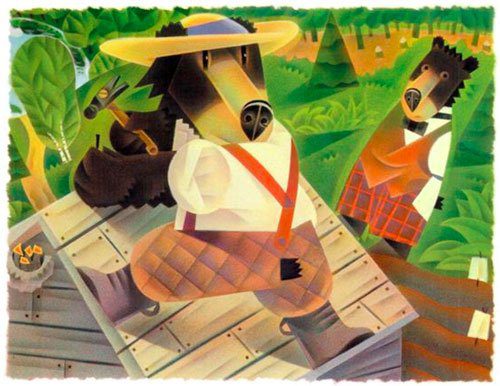
The author D. B. Johnson is a follower of Thoreau, who also likes the quiet and bleak, sincere lifestyle, so when designing the pattern, he chose a simple line or geometry to cut the screen neatly. At the same time, he deliberately created a clean and skillful effect on the screen, which brought out a calm, ingenious and skillful scene atmosphere.
In addition, in the use of colour, he mostly uses a soft series, whether it is red, blue, green, yellow, gray, white, black and other colours, will not over-eye-catching, and the colour is clear and distinct, with a low-key calm a feeling of. In order to achieve this, the neat lines plus distinct colours make the pictures of the picture books appear to be very simple and harmonious. They also manifested the spirit of love in the nature of “WALDEN”.
Deep reading or shallow reading, both gains
The Henry trilogy, although sourced from “Lakeside Records”, has become an independent system. In other words, even if people who have not read a famous book can read it as a single story and appreciate Henry’s confidence in building a house on the shores of Walden. Understand the process of Henry playing with friends racing to Fitchburg. Know that Henry is an imaginative humanist.
If the reader is fortunate enough to have read the masterpiece, he can realize that the author has already incorporated Thoreau’s personality traits, his life story, his main ideas, and his style of work into each story. Both the text and the picture have mastered the essence of Thoreau’s spirit. It is very natural and very easy to read.
Conclusion
Thoreau, in “WALDEN”, argues that life must be simple and does not require too much extra burden. DB Johnson is deeply influenced and practiced. He has created the Henry trilogy, focusing on the masterpieces of the classics and picture books. The analysis leads to the following conclusions: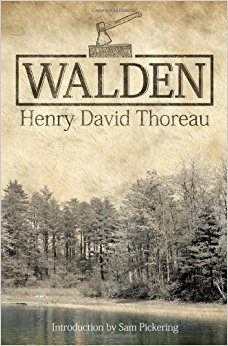
The author’s characters, life story, and substantial contents provide picture-rich story materials and enhance the contents of the picture book.
The picture book reinterprets the famous works with pictures and texts, allowing the profound contents to be expressed in a simple manner. The reader can enjoy the brand-new famous style.
In addition to presenting the essence of the classic masterpiece, the picture book author also fully expresses the style of self-art creation. The independence has great features.
The use of picture books to interpret classics allows readers to enjoy different levels of reading situations, and also allows them to be more widely disseminated and remain without ageing and become even newer as time goes by.
The content of Thoreau’s “WALDEN” is very rich. It is a remarkable work. Henry’s trilogy has been successfully expressed in a graphic and textual manner, creating a new atmosphere, allowing the famous and the picture book to be reconciled and blooming.
References
Su-Xia Xu (2002). Taiwan Children’s Picture Book Guided Tour. Taipei: National Taiwan Art Education Center.
- Henry David Thoreau; Chinese Translated by Xu-Chong Xin( 2013 ).”WALDEN “, Taipei; Gao Bao Press。
- D.B. Johnson, Chinese Translated by Suzhen Fang(2003). “HENRY BUILD A CABIN”. Taipei: Viking International.
- D.B. Johnson, Chinese Translated by Suzhen Fang(2004). “HENRY CLIMBS A MOUNTAIN”. Taipei: Viking International.
- D.B. Johnson, Chinese Translated by Suzhen Fang(2003). “HENRY HIKES TO FITCHBURG”. Taipei: Viking International
- Liang Lin(2000). Art of brief talking. Taipei: Mandarin Daily News.
- Wen-Bao Lin, Et al.(1998). Children’s literature. Taipei: Wu-Nan Press.
©Dr. Tze-Min Tsai
Photos from the Internet
#WALDEN #HenryBuildaCabin #HenryClimbsaMountain #HenryHIkestoFitchburg #DBJohnson #PictureBooks #HenryDavidThoreau

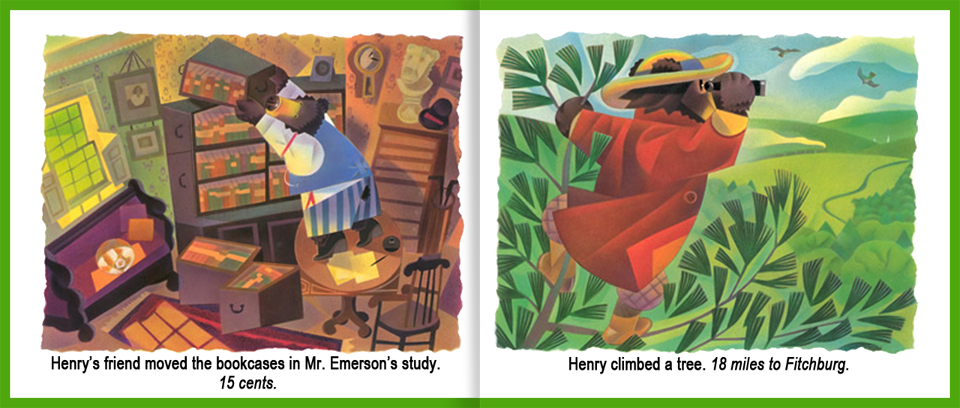

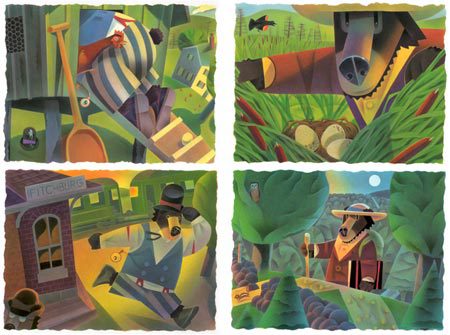

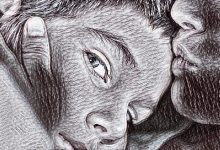
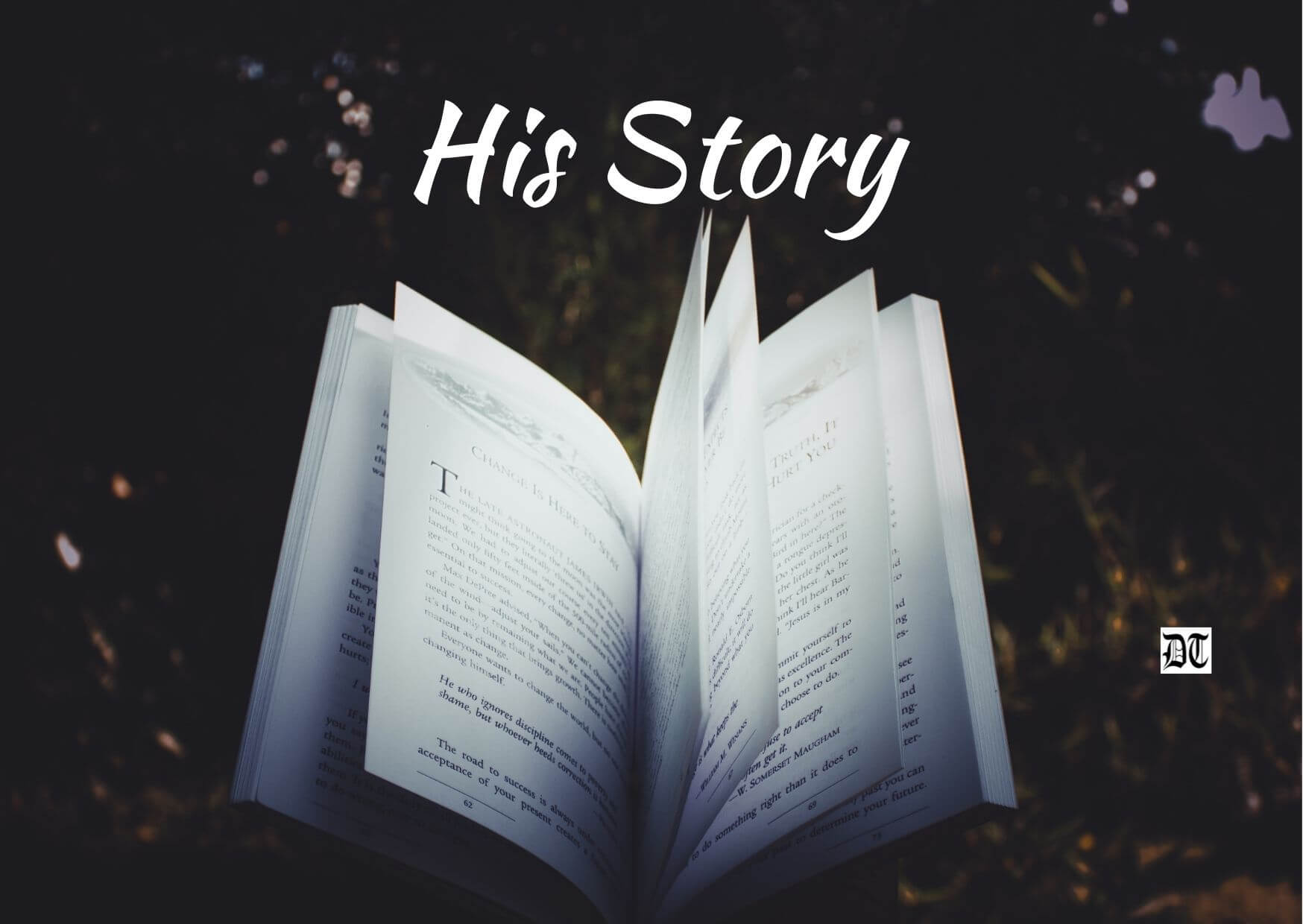

 By
By
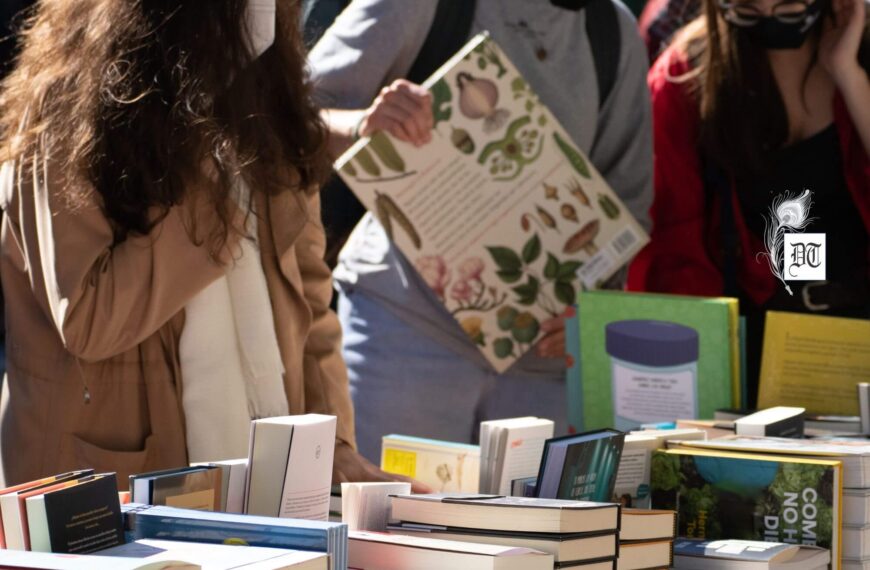
 By
By